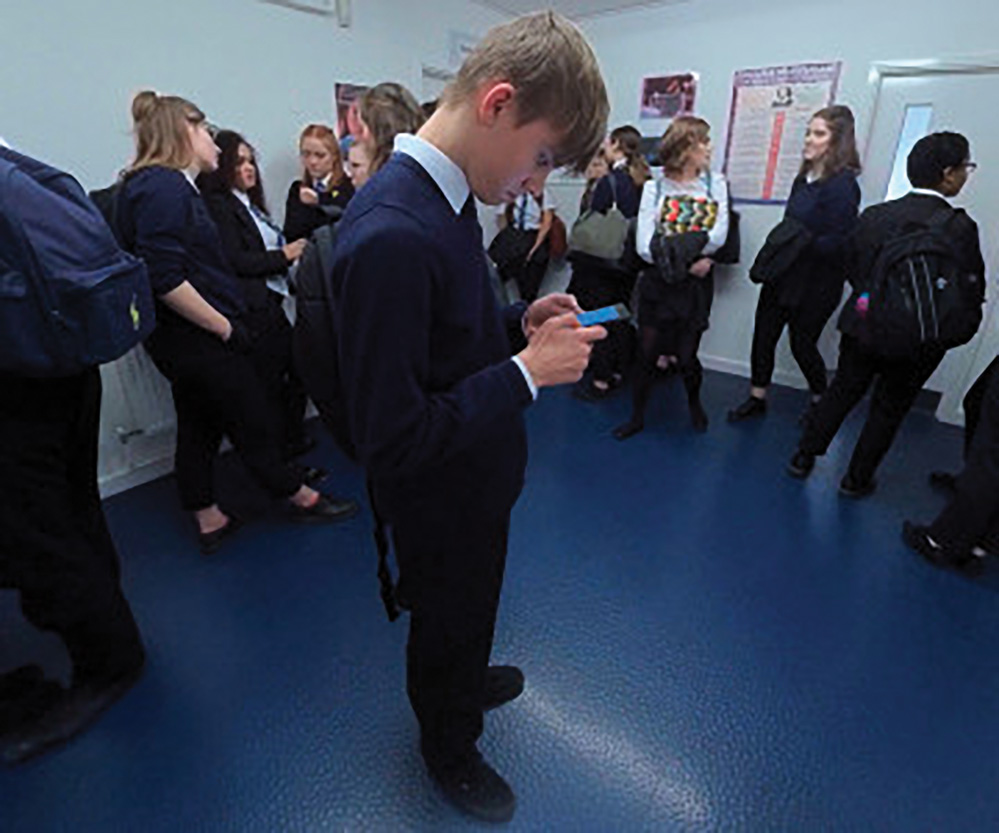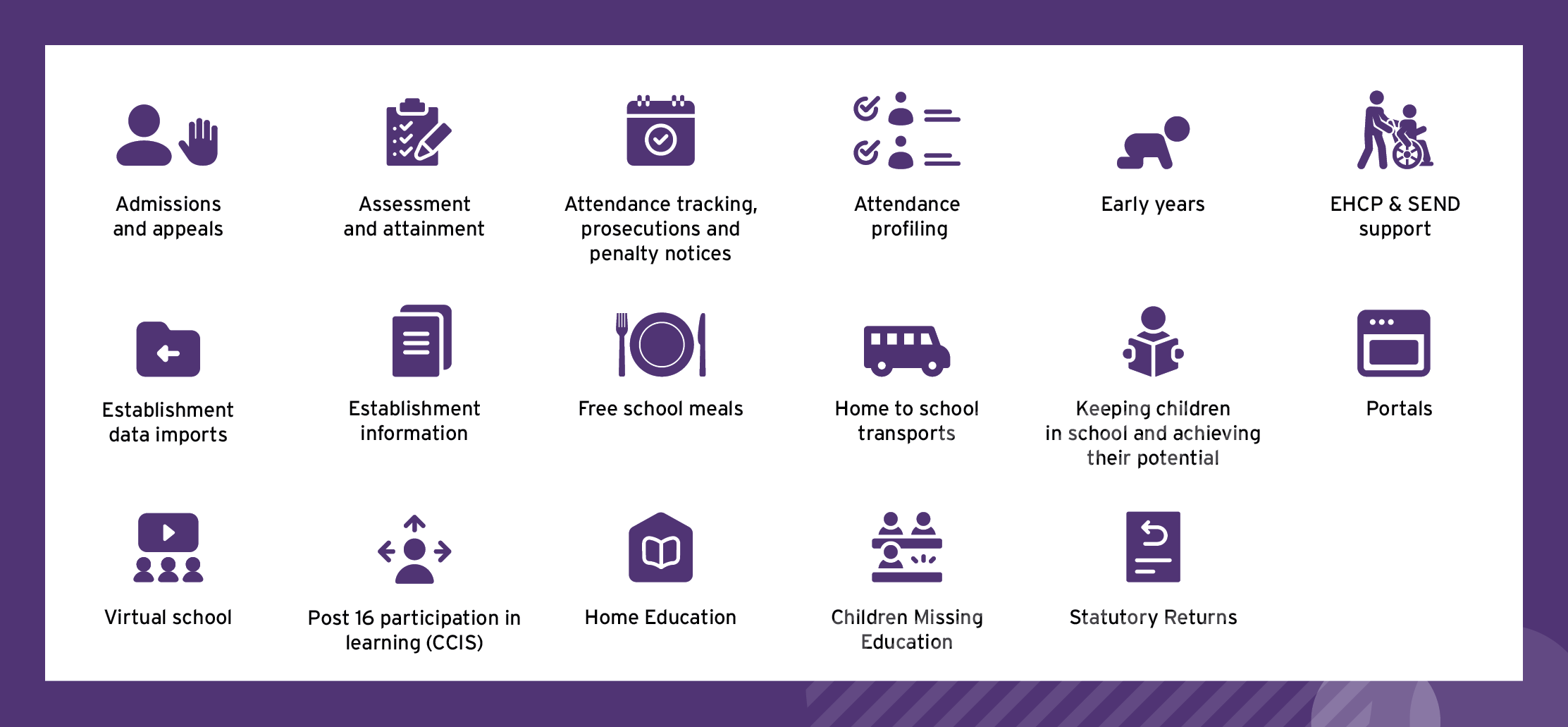
The day-to-day realities are an increasing number of children facing mental health issues, more absentee children, budget cuts and a risk of widening the disadvantage gap.
Local authorities are feeling the impact of these factors, which is pushing up Special Education Needs and Disabilities (SEND) assessments and children and adolescent mental health service (CAMHS) referrals, increasing pressure to raise inclusion rates and meet statutory obligations with less funding and staff.
If local authorities are to weather the current storm and support schools to meet the levelling-up targets set out in the Schools White Paper, it’s crucial that the system and services are reinforced with effective ways of working to have the best chance of managing the situation effectively and recover swiftly, all the while improving outcomes.
Disjointed information and separate systems reduce visibility
Fragmented information across several systems can cause communication problems, impact informed decision making, create safeguarding risks and at its worst be dangerous, with most serious case reviews citing disjointed information and siloed working as a factor in children being failed.
Recently, Dame Rachel de Souza, the children’s commissioner for England announced that an inquiry is to be conducted into the number of children of school age that are missing from education. Worryingly, it highlighted the lack of consolidated information after several local authorities were not able to provide simple data such as how many children the authority had in the area, how many are not on roll and how many are waiting for school places.
Shifting to a joined-up approach
Liquidlogic is helping local authorities break away from the traditional fragmented way of doing things. The company has invested heavily in a unique children’s solution that comprises social care, early help and education management, which is integrated on a single database for full visibility to support care and services.
Across the UK, over 80 local authorities are using the core Liquidlogic Children's Social Care System, with the Early Years & Education System (EYES) software module as an integral part of the system to break down information barriers to deliver service improvements and financial savings. The pace of adoption is continuing with 16 local authorities choosing to integrate the EYES system alongside their existing Liquidlogic Children’s Social Care System.
The EYES module is a comprehensive system designed to support the many needs of education services in the following areas:


Consolidation beyond council boundaries
The Liquidlogic system can support the collection of key data on children looked after outside of the local authority. Importing data from establishments helps provide insight into those pupils looked after by another local authority or where there might be an Education, Health and Care Plan in place, funded by another council.
EYES can also collect where the schools record child protection and child in need indicators and who the care authority is, providing a richer dataset which can be made available to professionals with access to see this information, subject to GDPR and local security policies.
Liquidlogic aims to remove the long-standing obstacles around data collection from outside of the local authority boundary, recognising that families move around, which helps reduce safeguarding risks and improves efficiency for the council supporting them.
Joined-up early years and education management in action
Councils such as Bristol, Manchester, Wiltshire, Knowsley, Trafford and Luton are successfully using EYES school admissions and appeals functionality for faster and easier processing.
April’s Primary National Offer Day saw a record 30,000 applications processed by local authorities using the system, with more than 28,000 emails and a little over 7,000 letters sent out with offers. The total number of applications has almost doubled compared to last year, which is largely due to the spike in the number of councils implementing EYES.
Debbie Craig, senior education officer at Luton Council shared some feedback on how the new system is benefiting their service: “We’ve managed school applications online for a long time, but it was time to replace the system that we were using with something that offered greater functionality. EYES is helping us improve the experience for parents and boost our own efficiency.
“Having everything in one place saves time, gives us the full picture of a child and family, including any risk factors, and enables us to share information with schools and other professionals. Ultimately, it results in better outcomes for children and their families.
“We used EYES for the first time this year to support our management of Primary National Offer Day. We processed more than 3,500 offers, with 93.9% of those applications being made online. National Offer Day can be an emotional and stressful time for families.
“Technology helps us ease that pressure as we can manage the whole process more efficiently, providing families with the information that they need as quickly and simply as possible.”
The Early Years team at Bristol City Council is taking advantage of the early years functionality to manage two-year-old funding. The system automatically processes applications made by parents/carers or providers via the portals which includes checking against the Department for Education’s Eligibility Checking System (ECS). This reduces the amount of time required of staff to manage applications. Many applications require no involvement at all.
In some circumstances, there is additional criteria that apply even if the child’s parent/carer is not in receipt of benefits. For instance, if they are currently a looked after child or have previously been so. It is at this stage in the process that the joined-up approach of the EYES system helps to streamline eligibility checking.
Using EYES, Early Years teams can see who is a looked after child because it includes integrated information from the social care system. This way, the whole eligibility process is completed in a more coherent manner and teams can make informed decisions based on a fuller picture of the child’s information.
Deborah Brown, free entitlement development officer, Early Years & Childcare Service at Bristol City Council had this to say on the system managing early years services: “More than 18 months down the line, Liquidlogic continues to understand my statutory duties and having lived through more than a full academic cycle in our partnership, is keenly attuned to the government changes that impact and shape our offer – both locally and nationally.
“I feel honoured to have been involved with the development of EYES with Liquidlogic and the Bristol City Council project team and would advocate to any local authority considering this product that the benefits far outweigh the costs (financially and professionally).”
Put your best foot forward with the bigger picture
Although there is relief now that children are back in the classroom, it has brought with it new challenges and a renewed focus on improvement. It’s imperative that these challenges and targets are met with workflows and practices that offer full visibility of a child’s needs to ensure the best possible outcomes for each and every child.
To find out more about the Liquidlogic EYES, visit https://www.liquidlogic.co.uk/children/early-years-education-system-eyes/ or email marketing@liquidlogic.co.uk

